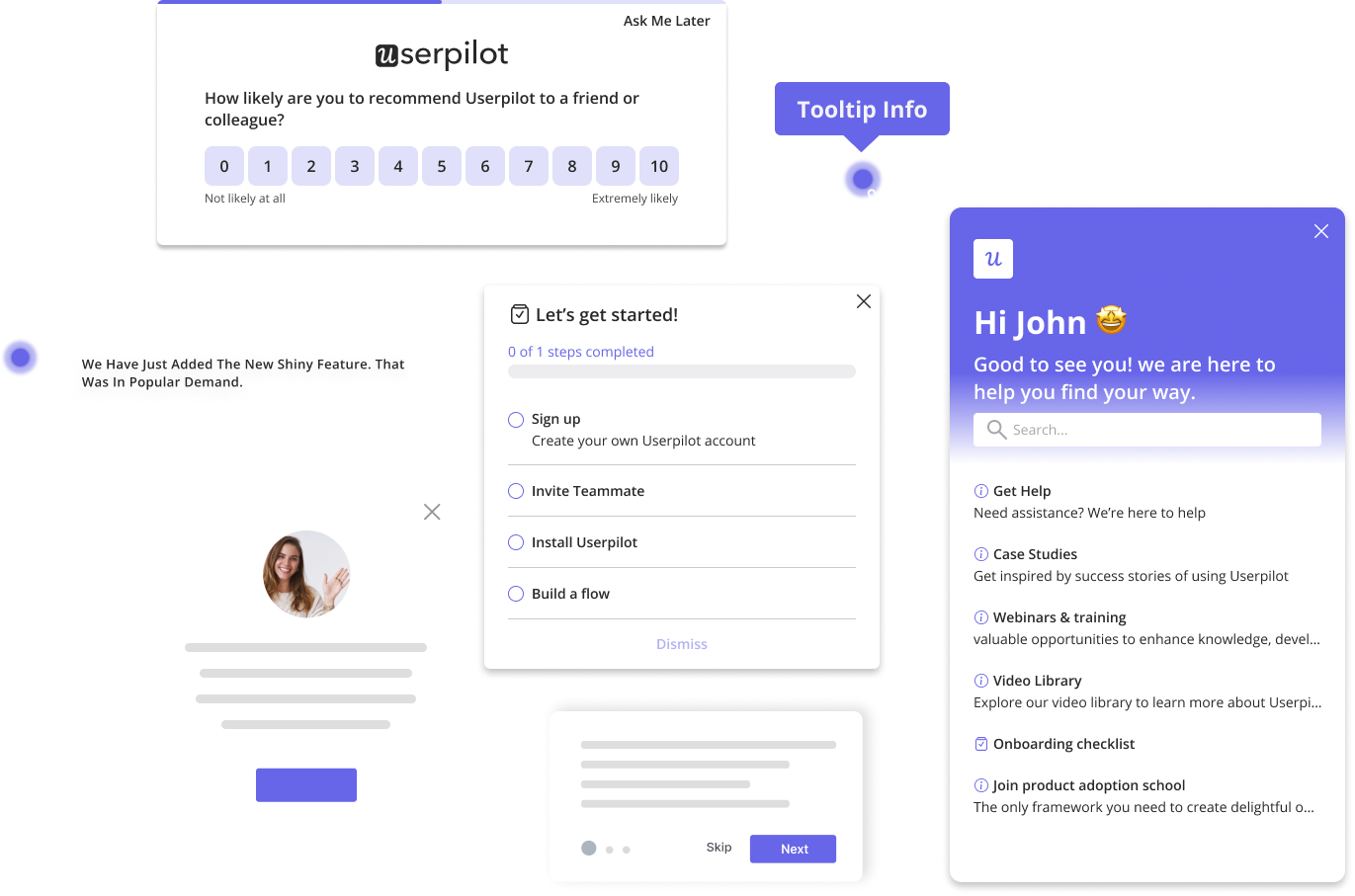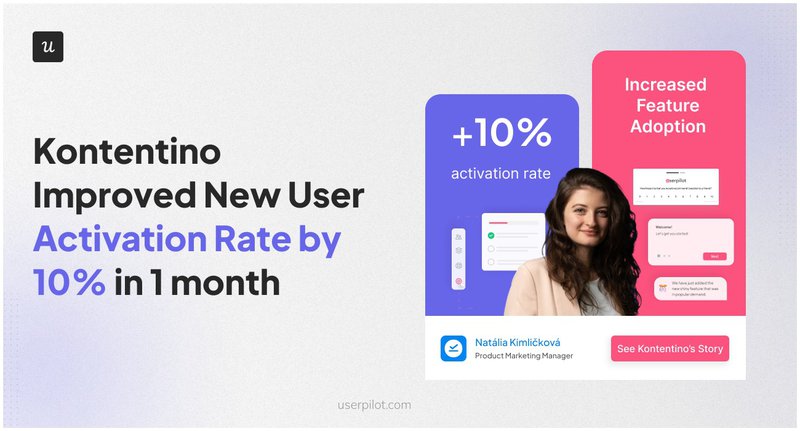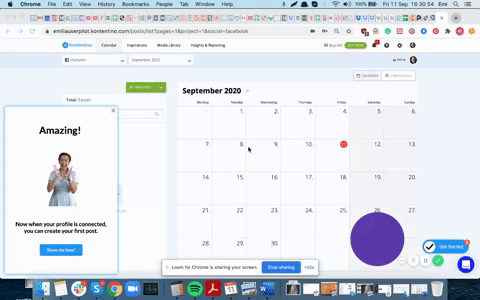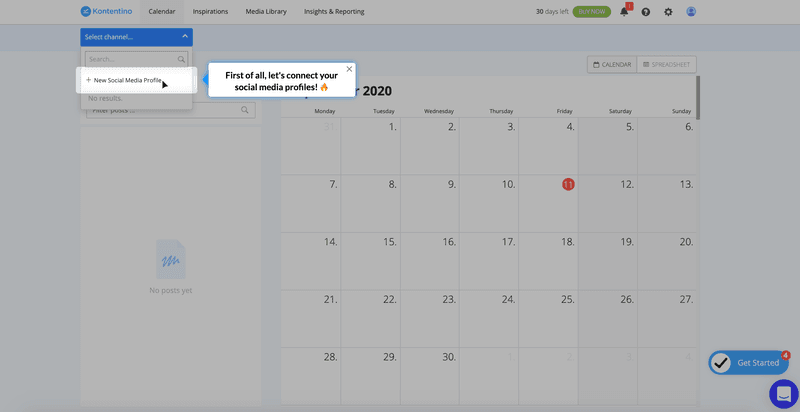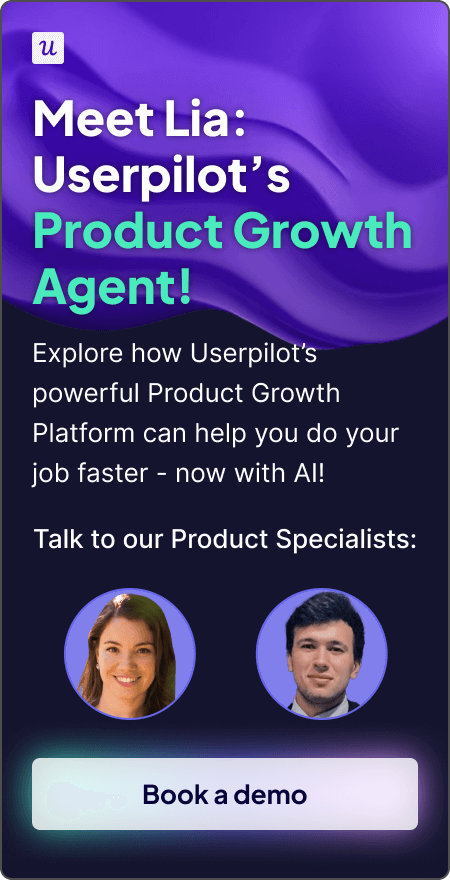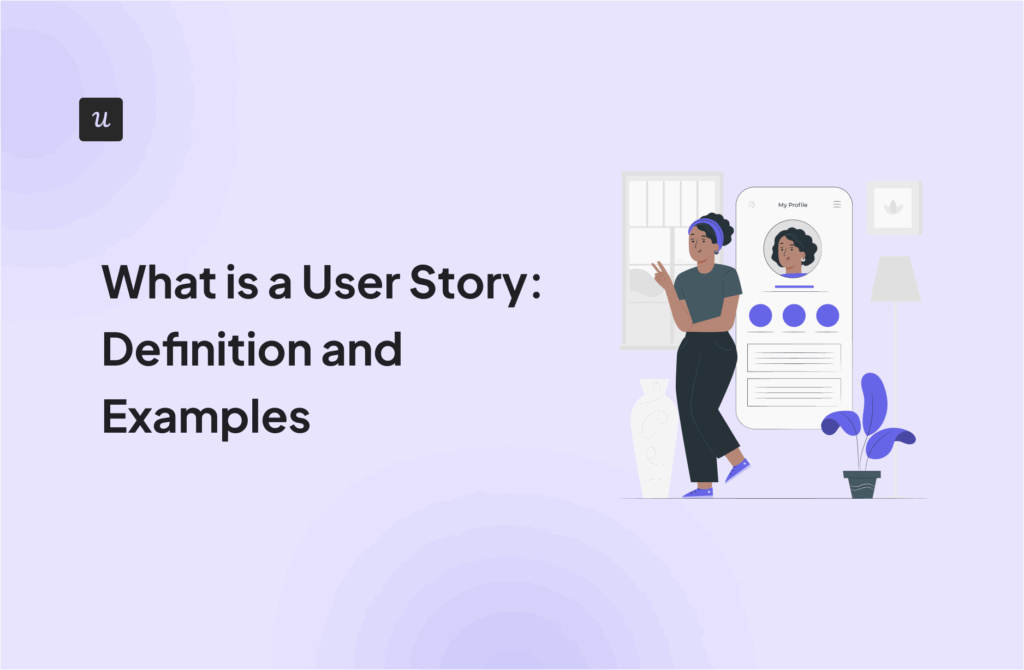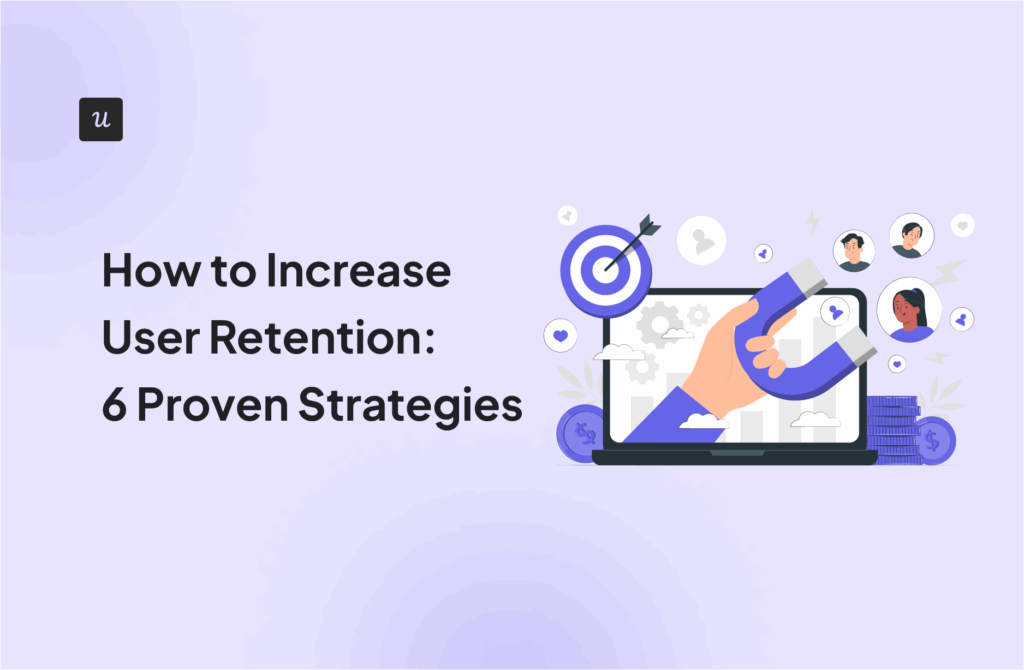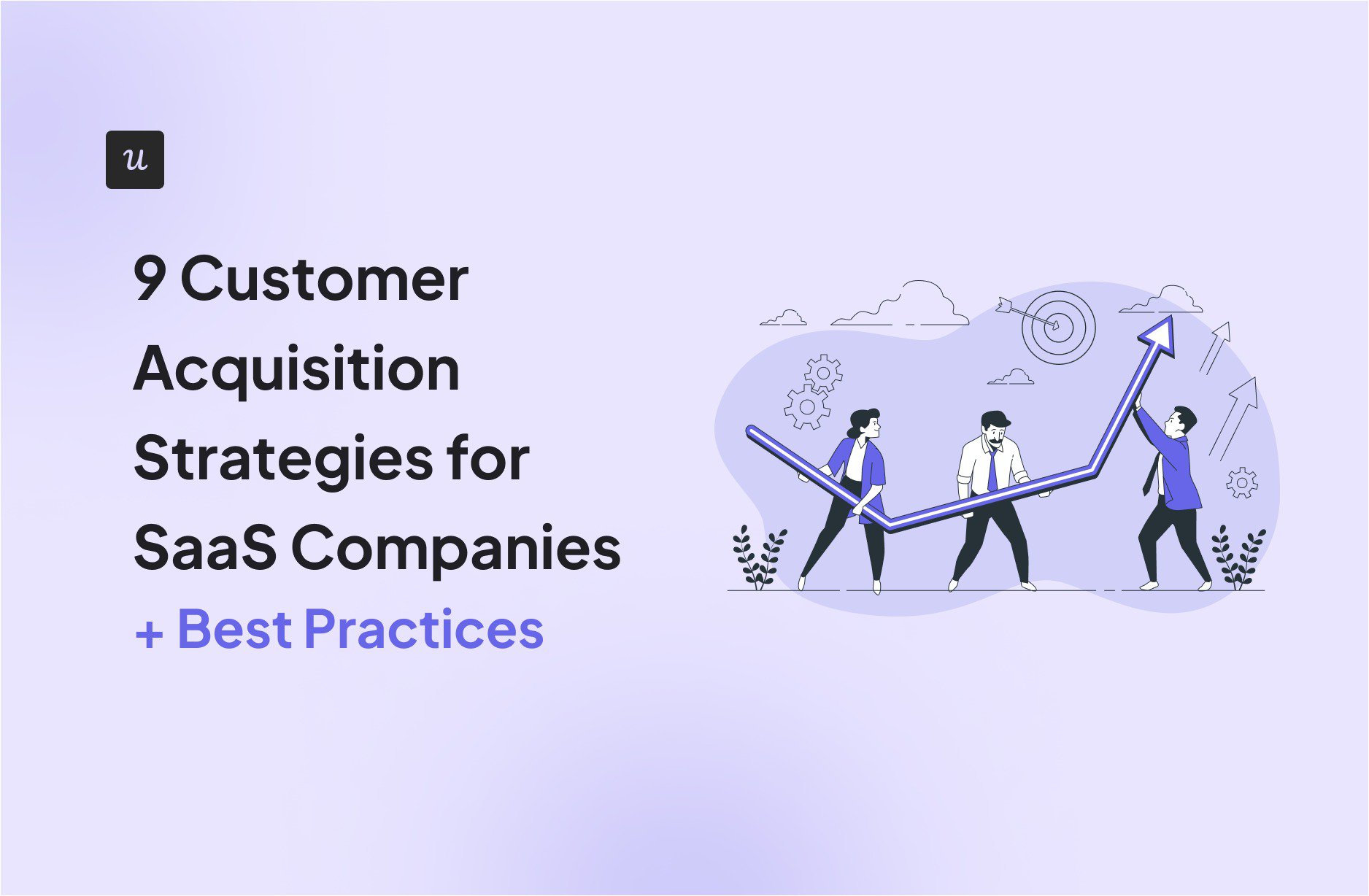
Customer acquisition is the process of identifying your target audience and convincing them to buy your product, while customer acquisition strategies are detailed plans for achieving that goal.
What are the best strategies that have worked for SaaS companies, and how do you implement them? This article provides an actionable guide along with best practices to engage your newly acquired users and drive sustainable growth.
Try Userpilot Now
See Why 1,000+ Teams Choose Userpilot
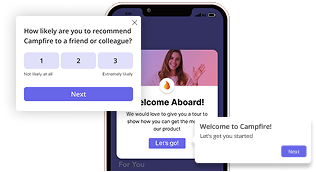
Understanding the customer acquisition flywheel
The typical SaaS customer acquisition process follows three funnel stages:
- Awareness: Potential customers discover your brand and product through marketing efforts like content, social media, or advertising
- Consideration: Leads actively research and evaluate your solution. They might read reviews, compare pricing, watch demos, or participate in free trials.
- Conversion: You convert qualified leads to paying customers and provide a seamless onboarding process to activate them as quickly as possible.
The problem with this approach is that it loses momentum once a deal is closed. It’s like you’re done with that converted user and starting the process all over again with a new set of prospects. At worst, this leads to a leaky funnel situation where you keep losing customers. At best, you retain your customers but don’t excite them enough to become loyal advocates.
A better approach? Replace the linear funnel with HubSpot’s flywheel model.
The customer acquisition flywheel is a continuous loop that helps your company maintain momentum throughout the customer lifecycle. After attracting and engaging new customers, it aims to delight them, and then actively leverage the power of these satisfied customers to drive referrals and fuel ongoing growth.
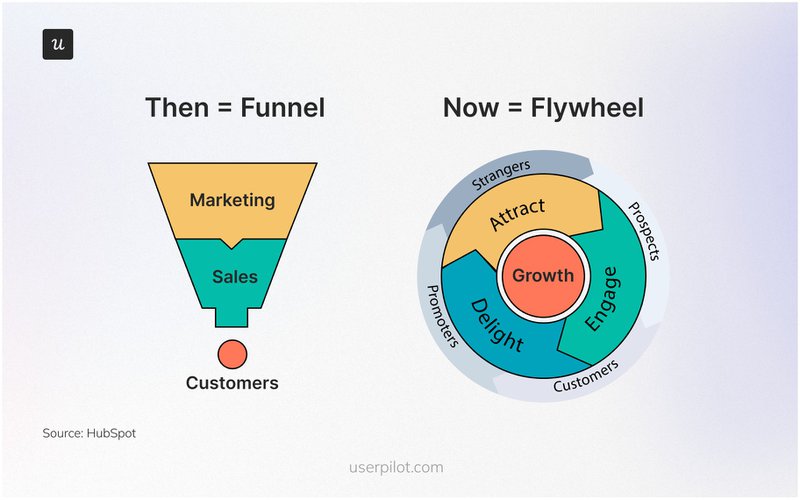
Who acquires customers in SaaS teams?
Adopting the flywheel model means breaking down silos and taking a cross-departmental approach to customer acquisition. Here are the five core teams and how they contribute:
- Marketing team: Uses free and paid customer acquisition channels to generate interest and attract users.
- Sales team: Engages with leads passed from the marketing team and closes deals by helping prospects see why your solution is the best.
- Customer service team: Provides prompt, helpful, and empathetic support that delights customers and creates a smooth experience with your brand.
- Customer success team: Takes customer delight to the next level by building strong relationships with the customers acquired, identifying opportunities to add value, and proactively nurturing customer loyalty.
- Product team: Builds a product that meets customer needs and creates competitive differentiation.
What is a customer acquisition strategy?
A customer acquisition strategy is a detailed plan for attracting, engaging, and converting potential customers into paying customers.
For your strategy to be comprehensive, it needs to consider:
- Your user personas.
- The customer acquisition methods you’ll use to reach them in the most cost-effective way.
- The messaging that will resonate.
- How you’ll measure success across the customer acquisition funnel.
9 Successful customer acquisition strategies for SaaS
This section will cover nine acquisition strategies and real-life examples from successful companies.
1. Boost organic reach with content marketing efforts and SEO
Content marketing involves creating and distributing relevant content to build brand awareness and ultimately acquire customers. Common examples include blog posts like the one you’re reading, industry reports, webinars, and podcasts.
Search engine optimization (SEO) uses technical and content practices like keyword research, optimized content, and proper site structure to improve your ranking on search engine results pages (SERPs). Content marketing provides the fuel (valuable content), while SEO is the engine that drives traffic to it. Together, they create a powerful organic acquisition machine.
SaaS example: Userpilot
Userpilot actively targets its ideal customer profile with content that addresses their specific needs and establishes the brand as a thought leader in SaaS product growth.
We employ a diverse range of content formats and topics to engage prospects at every stage of the customer journey. For example, early-stage prospects might interact with a blog post explaining product-led growth, while those further along in their journey will find tailored content such as comparison articles, in-depth problem-solving guides, and compelling case studies.
Userpilot further amplifies its reach through webinars, industry reports, social media content, and expert resources like the newly launched Product Innovation Think Tank (PITT).
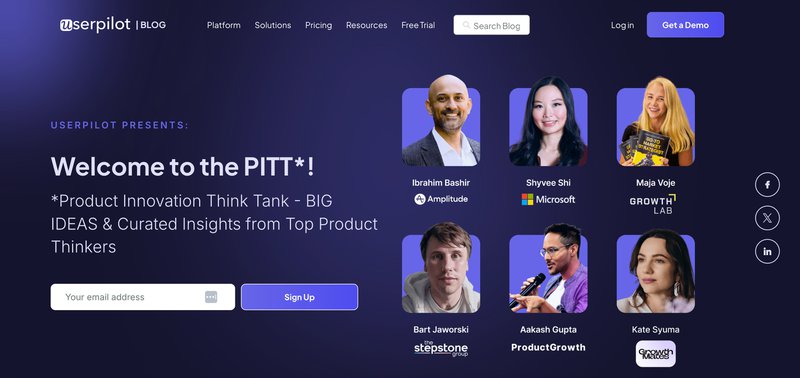
Notice how Userpilot uses sleek design and proper categorization to help users interact with the blog better:
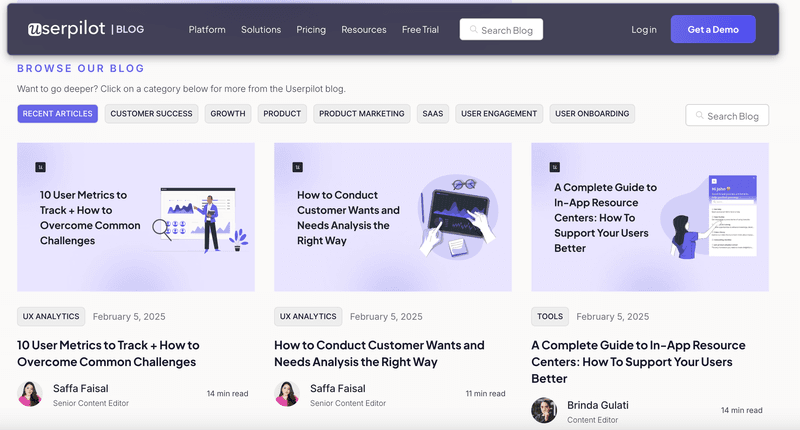
2. Drive conversions with paid advertising and social media ads
Content marketing works, but it’s a slower process that can take several weeks or even months before you start seeing tangible results.
If your current business goals demand rapid customer acquisition, the best strategy would be pay-per-click (PPC) ads on platforms like Google and Bing or social media apps like Facebook, LinkedIn, and Twitter. Of all PPC options, Google ads are the favorite for 98% of marketers.
It’s easy to see why: Google offers the largest reach because of its vast user base. Plus, the ad platform lets you create a variety of ads, including search ads that appear prominently at the top of search results pages, display ads that appear on millions of websites, and video ads on YouTube.
SaaS example: Zoho
This search ad from Zoho comes up before other organic content when you search for “Project management software.”
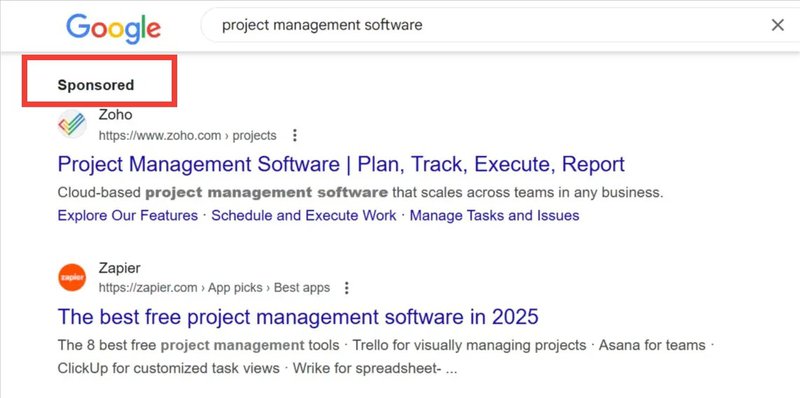
3. Grow with word-of-mouth marketing through social proof and referrals
When was the last time you tried a new software product based on trusted recommendations?
Nielsen’s 2021 global advertising study reveals that 88% of people trust recommendations from their network above all other advertising, and BrightLocal reports that 42% trust online reviews as much as personal recommendations.
In other words, getting people to talk about your brand will boost your acquisition rates, and conversion increases if these people have a closer relationship with your target audience.
So, how do you drive word-of-mouth? The first step is to identify your satisfied customers. Then, turn their positive experiences into powerful marketing assets by doing any of these:
- Interview them and share their testimonials or case studies on your website.
- Encourage them to leave positive reviews on platforms like G2 and Capterra.
- Create a solid customer referral program that incentivizes them to recommend your product.
SaaS examples: Dock and Dropbox
Dock embeds customer success stories on its website to demonstrate the platform’s use cases and attract the right customers:
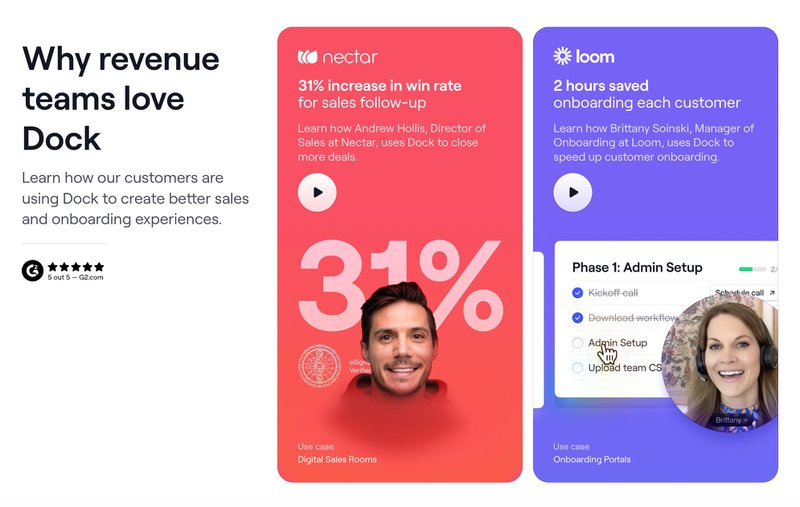
Dropbox created a referral program that rewards customers with extra storage for inviting new users. This program was initially launched in 2008 and was so successful that the company recorded 2.8M referral invites within 15 months.
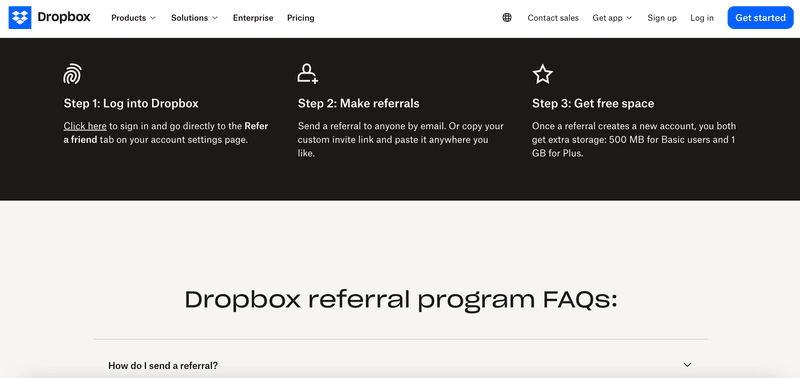
4. Accelerate adoption with proven product-led tactics
Product-led growth is a business strategy that uses your product as the main vehicle for acquisition, customer retention, and expansion.
Here are a few of its tactics that can help you acquire customers:
- Free trials: Allow users to experience your product’s value for a limited time without financial commitment. Aim to upsell them before the trial period ends.
- Freemium: Create a basic version of your product that’s free forever but limited enough to convert prospective customers into paying customers.
- Personalized onboarding: Deliver engaging onboarding experiences that shorten the time to value and boost activation rates.
SaaS example: Kontentino
Kontentino increased activation by 10% when they used our platform to create interactive onboarding guides:
5. Expand your influence with influencer and partnership marketing
Influencer and partnership marketing allows you to tap into the power of established communities and build credibility through association.
The key to succeeding with this strategy is careful selection. Don’t just chase the biggest follower count. Instead, identify and partner with influencers whose audience aligns closely with your ideal customer profile and whose values resonate with your brand.
SaaS example: Notion
A great recent example is Notion’s partnership with rap legend Snoop Dogg to promote its AI-powered avatar generator called Notion Faces.
This customer acquisition tactic generated significant buzz and resulted in many people creating user-generated content all over social media (particularly LinkedIn, where the post was first shared).
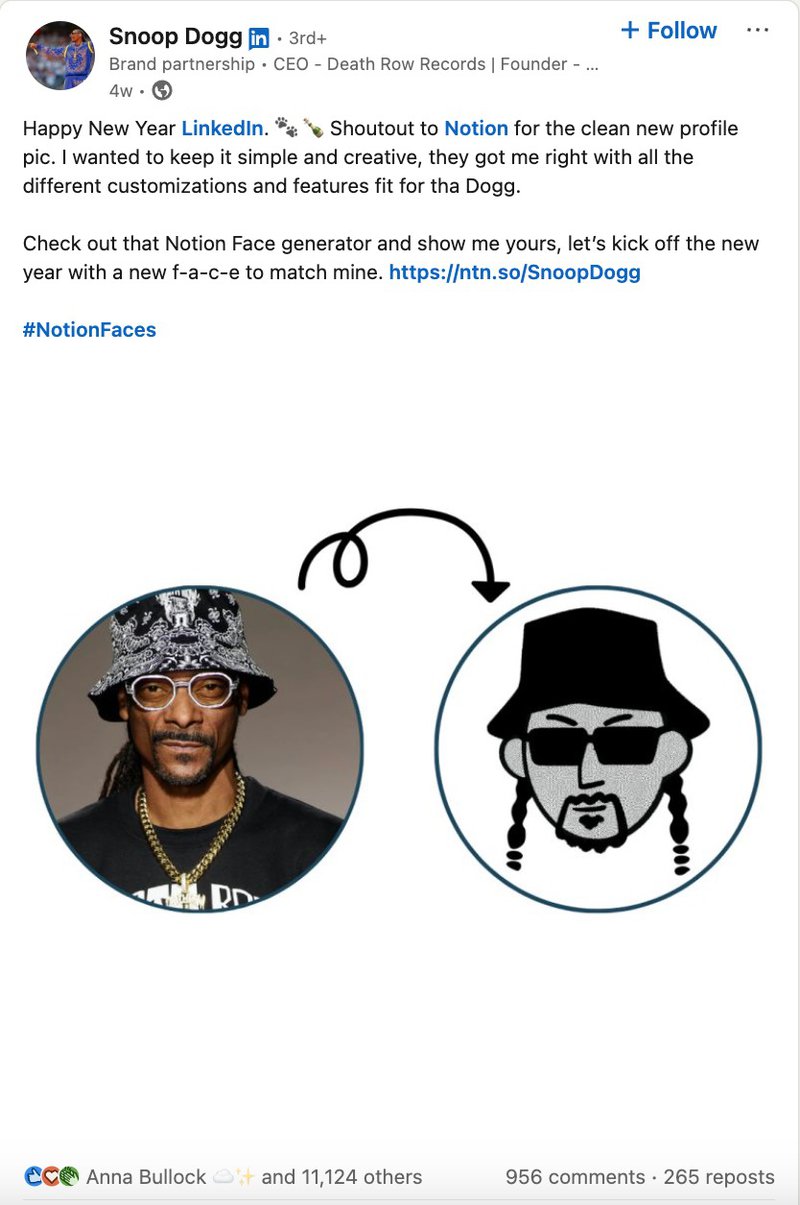
6. Reel in new customers with email marketing and automation
Email marketing has been around for a while, but it remains one of the most effective customer acquisition channels with an impressive ROI. In fact, 78% of marketers report an ROI of $21 or more for every dollar spent.
How do you maximize this channel? Use email automation tools like ActiveCampaign to segment your audience and trigger engaging drip sequences that educate and move them further down the customer journey.
SaaS example: Semrush
Semrush uses email marketing to deliver timely, vibrant emails announcing feature updates. Notice how the email below visually explains the updates and ends with a CTA to drive engagement:
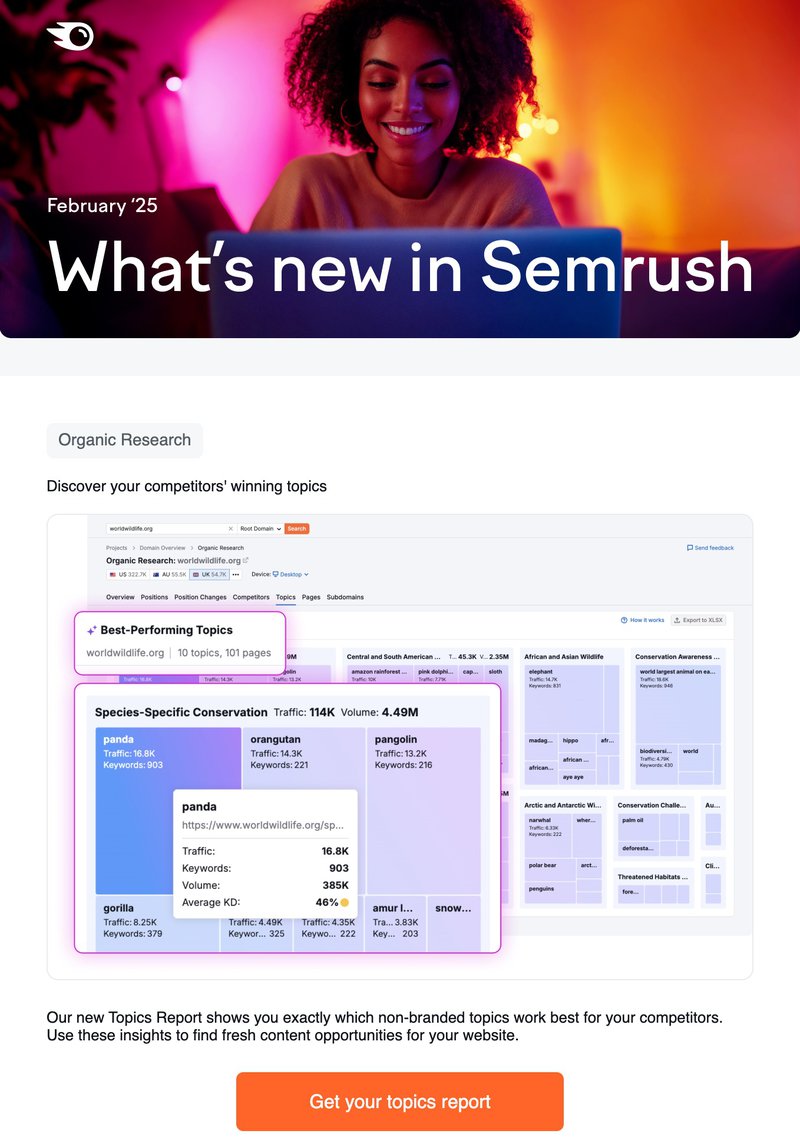
7. Optimize every touchpoint with data-driven testing and conversion optimization
Your customer acquisition strategies won’t be perfect from day one. Continuously analyze user behavior and gather data at each touchpoint to identify areas for improvement.
As you do this, you might develop several hypotheses about how to better attract and engage customers. This is where A/B testing comes in. Use a tool like Userpilot to compare different variations and choose what works best. For example, you could A/B test your onboarding flows, in-app messages, or even the design and placement of interactive elements within your product.
Here’s what doing it code-free in Userpilot will look like:
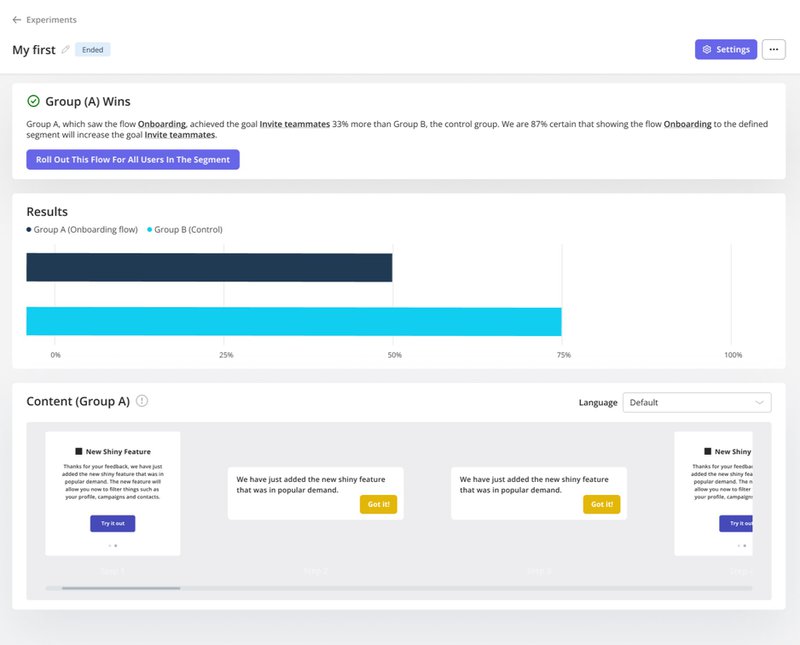
8. Invest in event marketing campaigns
Event marketing involves hosting webinars, live Q&A sessions, or virtual conferences to provide valuable insights and answer customer questions in real time.
This strategy immediately positions you as a thought leader in your industry and opens the door to marketing partnerships with other businesses. It’s also a great way to attract qualified leads, especially if you’re discussing super-niche topics.
SaaS example: Userpilot
Userpilot interviews experienced product leaders from companies like Microsoft, Amplitude, Growth Labs, etc., for raw insights into driving SaaS growth.
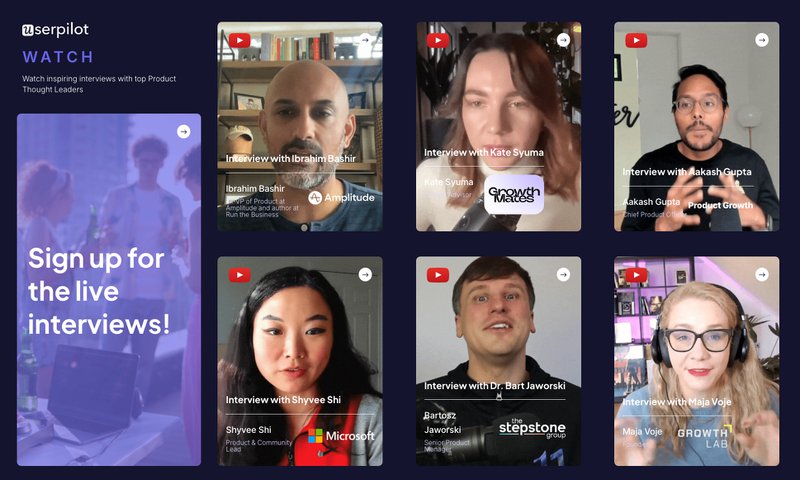
9. Employ gamification during onboarding for prospective customers
Onboarding gamification is using game-like elements like interactive quizzes, contests, leaderboards, or product demos with rewards to make the customer journey engaging and drive user acquisition through fun, shareable experiences.
Gamification works because it reduces cognitive load and makes learning more enjoyable.
SaaS example: Headspace
Headspace uses branched onboarding to understand the user’s intent. Then, it deploys a gamified breathing exercise to help users experience immediate value and see how the platform can improve their mental well-being.
This engaging onboarding experience resulted in a 10% increase in free-to-paid conversion rates.
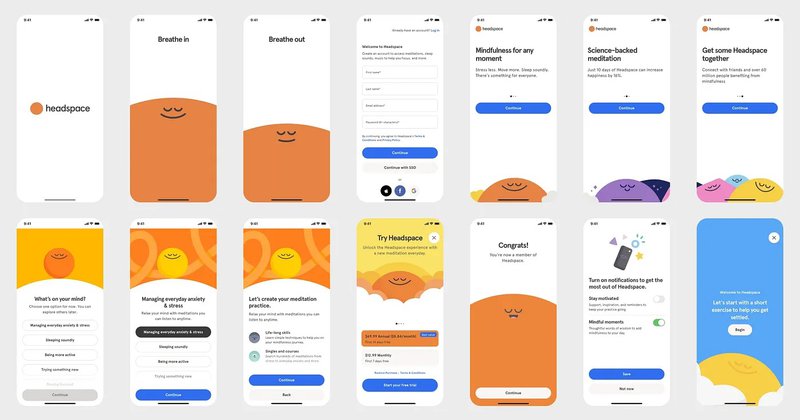
Best practices for creating a sustainable customer acquisition strategy
Now that you have an idea of the customer acquisition strategies to implement, let’s go over a few best practices for maximizing your resources.
1. Develop detailed buyer/user personas
Personas are semi-fictional representations of your ideal customers based on data about your potential and existing customers.
Think of each persona as a real person with specific needs, motivations, and challenges. What are their demographics? Can you identify their goals? What are their pain points? What’s their online behavior like? The more detailed your personas, the better you can tailor your messaging and acquisition efforts to resonate with them.
Here’s an example you can adapt to your needs:
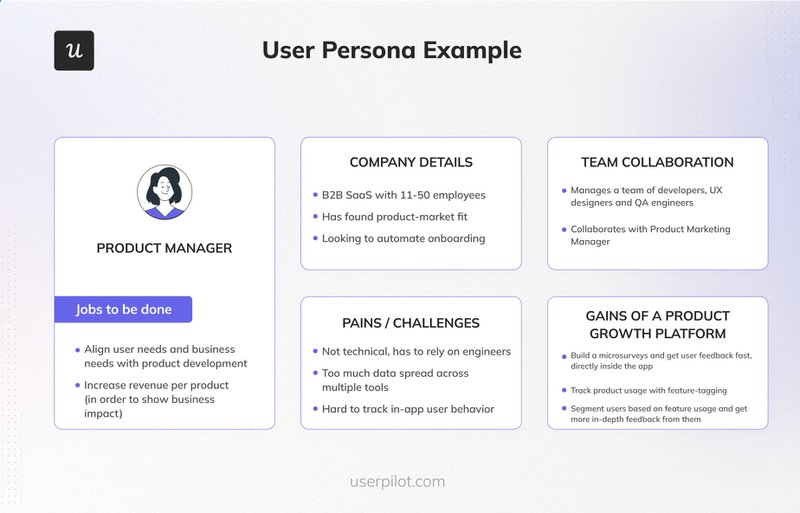
2. Adopt a multi-channel approach
Combine SEO, content, paid ads, social media, and product-led tactics to diversify reach and reduce risk. For example, you could use search ads to drive traffic to your high-intent pages while also creating search engine-optimized posts and repurposing them as LinkedIn content.
This multichannel approach is especially important if you’re just starting out or haven’t tried many customer acquisition strategies. However, keep an eye out for where you find the most success and adopt it as one of your main customer acquisition channels.
3. Prioritize inter-team collaboration across the organization
Use strategies like shared goals, regular communication, and centralized analytics dashboards to align your marketing, sales, product, and customer success teams.
For example, the marketing team can share insights on campaign performance and lead generation to help the sales team close deals faster. Product teams can work with marketing and sales to understand customer needs and develop product features that address those needs. The list goes on.
4. Implement a continuous feedback loop
Find improvement opportunities by regularly surveying prospects and new customers about their experience. This can be as simple as an onboarding survey after a new user finishes your onboarding flow or an exit survey to understand why a trial user doesn’t want to convert.
Beyond surveys, you can use interviews and analytics to spot friction points. For example, implementing funnel analysis in Userpilot will help you see where users are dropping off in the product journey. You can then investigate further and address the underlying issues.
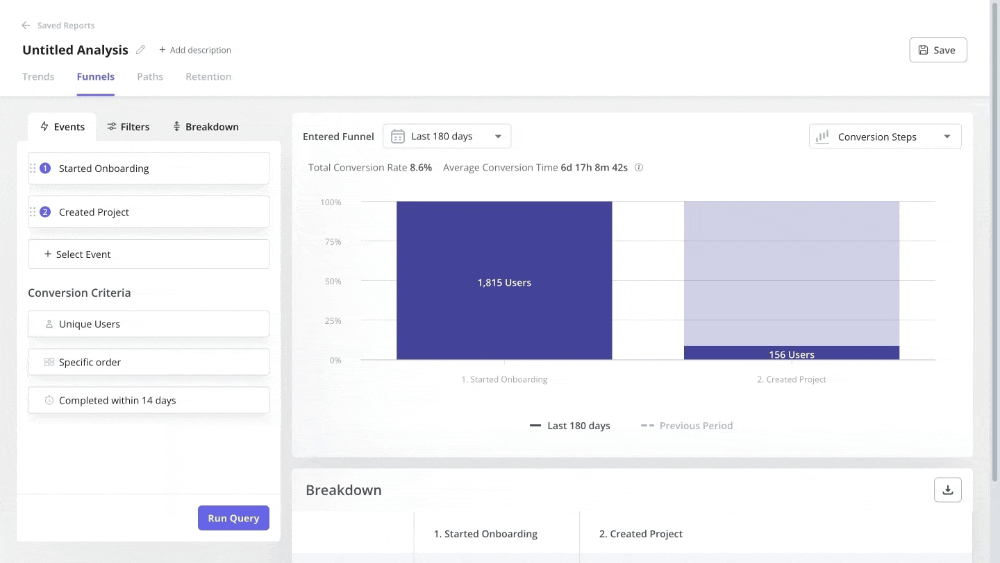
5. Focus on optimizing the customer experience
Verint’s 2023 digital customer experience survey found that 80% of customers are more likely to stick around after a great experience. You can drive this retention and loyalty by prioritizing exceptional experiences from the first touchpoint and continuing it throughout the customer journey.
This could mean offering an engaging demo experience, providing prompt customer support, and regularly checking in to see if existing customers are achieving their goals.
6. Monitor the market for research and emerging trends
Stay ahead of the curve by continuously monitoring market trends and competitor activities. This will help you identify new opportunities, adapt to changing customer preferences, and refine your acquisition strategies. For example, if you see a competitor having success with a particular type of content or advertising campaign, that might be your clue to experiment with something similar.
But, of course, be bold with trying new things. You might just be the one who first discovers what other companies in your niche aren’t seeing.
Streamline your path to new customers
The best customer acquisition strategies are rooted in a deep understanding of your existing customers and target audience. This will inform the channels you use, tactics you employ, and how you track campaign results.
Userpilot can help with this! Book a demo today to see how our platform can equip you to collect customer data, deploy engaging in-app experiences, and track the performance of your customer acquisition strategies.
FAQ
How can I measure customer acquisition success?
Track key metrics like customer acquisition cost, customer lifetime value, conversion rates, and overall ROI. Lower acquisition costs, higher customer lifetime values, and strong conversion rates indicate a successful strategy.
How do I choose the right acquisition channels?
Consider your target audience, where they spend their time online, and the channels best suited for reaching them. Experiment with different channels and track their performance to identify the most effective ones for your business.
What role does content play in customer acquisition?
Content attracts potential customers through search engine optimization (SEO), educates them about your product, builds brand awareness and trust, and ultimately nurtures them towards a purchase decision.
What tools can help streamline customer acquisition efforts?
Consider the following:
- CRM systems: Manage customer interactions and track leads throughout the sales funnel. Popular options include Salesforce, HubSpot, and Pipedrive.
- Marketing automation platforms: Automate marketing tasks like email campaigns, social media posting, and lead nurturing. Consider platforms like Klaviyo, Brevo, or Mailchimp.
- Analytics tools: Track website traffic, user behavior, and campaign performance to identify areas for improvement. Google Analytics is a widely used free tool, while paid options like Mixpanel offer more advanced features.
- An all-in-one product growth tool: Userpilot can help you optimize the user experience, track product usage, and personalize onboarding to improve activation and customer retention.

